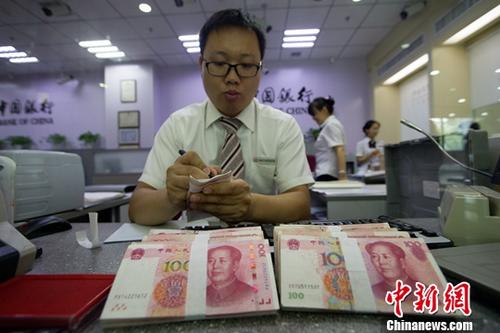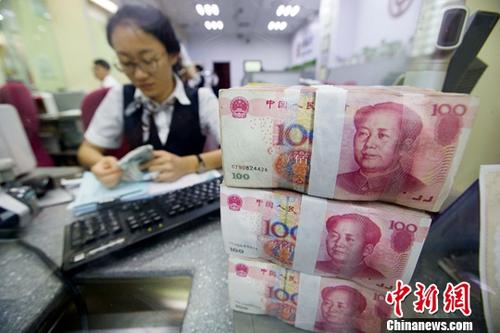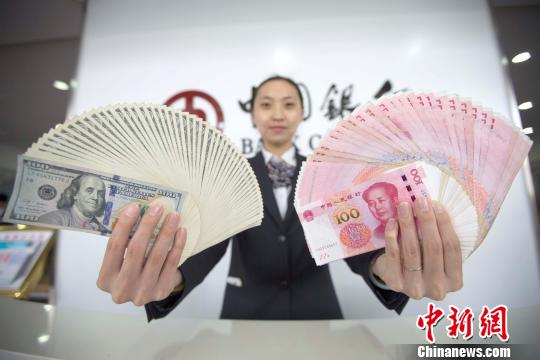Economic observation: What can the Belt and Road Initiative bring to RMB internationalization?
China news agency, Beijing, August 13th (Reporter Wang Enbo) As two important arrangements in the new pattern of economic governance in China, there is huge room for the coordinated development of the Belt and Road Initiative and RMB internationalization. The former, in particular, has become a new driving force for the latter to keep moving forward.

Nowadays, the RMB has become more and more "international". On October 1, 2016, the RMB was officially included in the Special Drawing Rights (SDR) currency basket of the International Monetary Fund, and the road to internationalization ushered in a milestone. According to the statistics of SWIFT, as of June this year, more than 1,900 financial institutions around the world use RMB as the payment currency.
So, what can the "Belt and Road" bring to the further internationalization of the RMB? Sun Guofeng, director of the Financial Research Institute of the People’s Bank of China, said at the first China Financial Forty Forum held recently that the international status of currency has created conditions for China’s banking system to provide overseas financing in the form of RMB. Exporting RMB under capital with the help of the Belt and Road Initiative is a sustainable internationalization strategy that is conducive to macroeconomic balance, in line with national welfare.

Guan Tao, a senior researcher at the China Financial Forty Forum and former director of the Balance of Payments Department of the State Administration of Foreign Exchange, pointed out that in 2016, the actual receipt and payment of RMB in cross-border trade between China and countries along the Belt and Road only accounted for 13.9% of the bilateral trade volume, and there is still much room for improvement. With the closer economic and trade exchanges between China and countries along the route, it is inevitable for the market to take RMB, one of the major international currencies, as the pricing negotiation currency in order to save exchange costs.
However, under the current situation of exchange rate fluctuation and capital flow, RMB internationalization still has a long way to go. The National Financial Work Conference, which ended a few days ago, clearly pointed out that it is necessary to expand financial opening to the outside world, deepen the reform of RMB exchange rate formation mechanism, steadily promote RMB internationalization, and steadily realize capital account convertibility. At the same time, the meeting proposed to promote financial innovation in the construction of the "Belt and Road" and do a good job in the design of relevant systems.
Sun Guofeng believes that taking advantage of the opportunity of the "Belt and Road" construction to promote the internationalization of the RMB should give full play to the role of various financial institutions, including development financial institutions. Because the "Belt and Road" construction has the characteristics of long project recovery cycle and huge capital demand, development finance can play an important role in it. At the same time, development finance and domestic and foreign commercial financial cooperation should be encouraged. The former mainly plays a leading role. After making profits, relevant institutions can transfer part of the financing to commercial financial institutions and continue to use the withdrawn funds for other development financial projects, so as to realize a benign turnover of funds.

It is worth mentioning that the dispute over currency selection is a common problem in the process of promoting development finance. For example, there are voices that the interest rate of ten-year government bonds is only 0.05% due to the negative interest rate of the Japanese yen, and the absolute cost of financing is relatively low internationally. Comparatively speaking, will the higher cost of monetary financing lead to the lack of sufficient competitiveness in providing financing in China, thus slowing down the internationalization of RMB?
According to Yin Yong, deputy governor of China People’s Bank, this understanding is not accurate. He pointed out that in developed financial markets, the choice of two currencies can be converted by currency swap operation, and both RMB and US dollar funds can be converted into Japanese yen with lower interest rate, and vice versa. In addition, China’s foreign exchange reserves include currencies of all developed countries and emerging market countries in the world, and if there are financing needs in other currencies, it can also meet them.
"Because our RMB pool is relatively larger, we have a relatively competitive advantage in providing RMB funds, and the RMB should be able to ‘ Belt and Road ’ Play a greater role in construction. " Yin Yong said. (End)